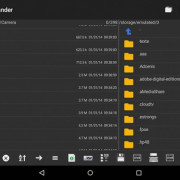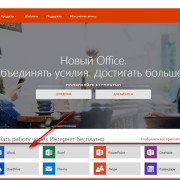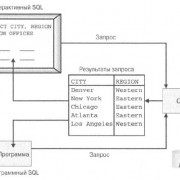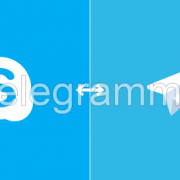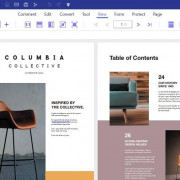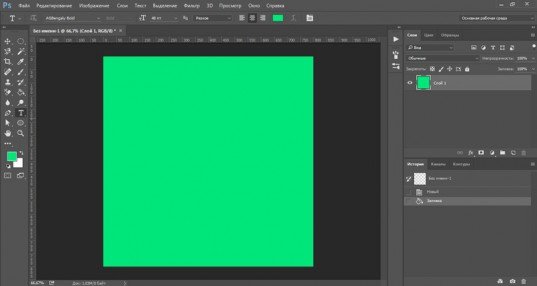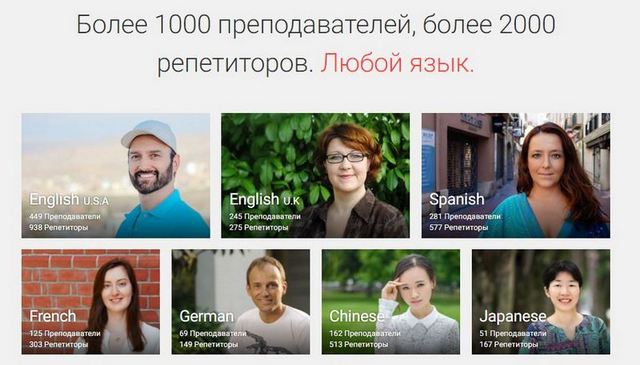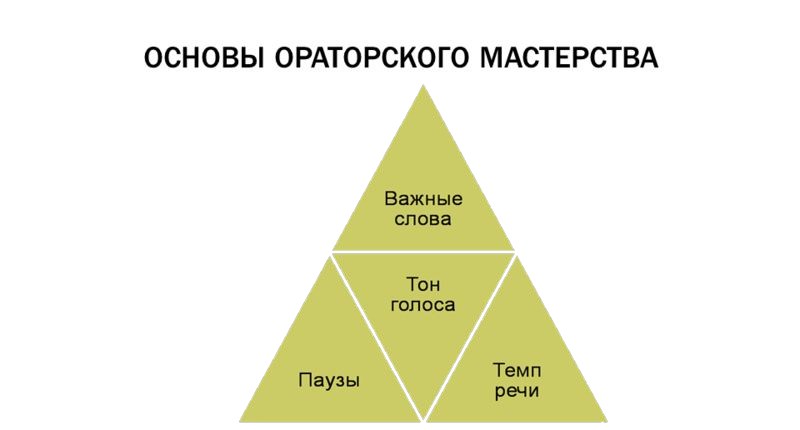Все уроки в gimp
Содержание:
- Digital painting improvements¶
- Roadmap and what’s next¶
- GIMP for macOS
- Creating text¶
- Some Statistics on Our Awesome Contributors¶
- FILES
- Miscellaneous¶
- Metadata viewing, editing, and preservation¶
- GIMP for Windows
- How You Can Help¶
- The Gimp module¶
- Возможности редактора Gimp
- More use for CIE LAB and CIE LCH¶
- Text tool supports CJK and more writing systems¶
- Source for version 2.99 (Development)
- Начинающим: уроки по GIMP
- Updated user interface and initial HiDPI support¶
- Donate to the Project¶
- Hacking¶
Digital painting improvements¶
GIMP 2.10 ships with a number of improvements requested by digital painters. One
of the most interesting new additions here is the MyPaint Brush tool that
first appeared in the GIMP-Painter fork.
The Smudge tool got updates specifically targeted in painting use case. The
new No erase effect option prevents the tools from changing alpha of pixels.
And the foreground color can now be blended into smudged pixels, controlled by
a new Flow slider, where 0 means no blending.
All painting tools now have explicit Hardness and Force sliders except for
the MyPaint Brush tool that only has the Hardness slider.
Most importantly, GIMP now supports canvas rotation and flipping to help
illustrators checking proportions and perspective.
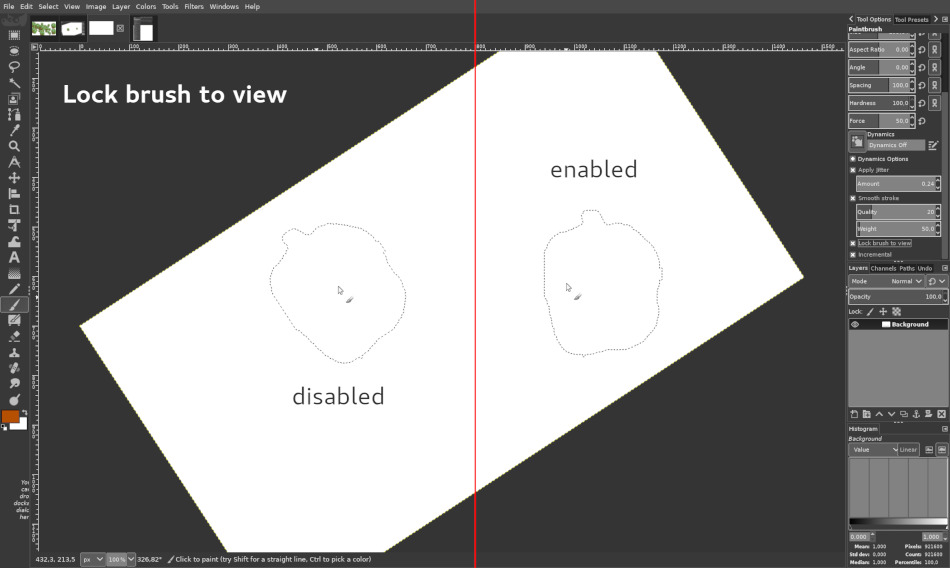
A new Brush lock to view option gives you a choice whether you want a brush
locked to a certain zoom level and rotation angle of the canvas. The option is
available for all painting tools that use a brush except for the MyPaint Brush tool.
New Symmetry Painting dockable dialog, enabled on per-image basis, allows to
use all painting tools with various symmetries (mirror, mandala, tiling…).

This new version of GIMP also ships with more new brushes available by default.
Contributors: Michael Natterer, Alexia Death, Daniel Sabo, shark0r, Jehan
Pagès, Ell, Jose Americo Gobbo, Aryeom Han…
Roadmap and what’s next¶
We maintain a roadmap for GIMP development
that outlines the order of features to be implemented based on priorities.
The next big update will be v3.0 that will feature GTK+3 port and a lot of
internal changes. For users, this will mostly mean: updated user interface,
better support for graphic tablets, better support for HiDPI displays, better
support for Wayland on Linux.
We are also opening the 2.10.x series for new features. This means you don’t
have to wait for exciting improvements for years anymore: any new feature can
indeed be backported to a 2.10.x release as long as its code is not too invasive
and making maintenance difficult.
All the new features from 2.10.x will be part of 3.0 as well.
GIMP for macOS
Download GIMP 2.8.22
via BitTorrent
Download GIMP 2.8.22
directly
The download links above will attempt to download GIMP from one of our trusted mirror servers.
If the mirrors do not work or you would rather download directly from our server, you can get the direct download here.
Since the 2.8.2 version, GIMP runs on OSX natively. No X11 environment is required.
Native build
The official GIMP 2.8 DMG installer (linked above) is a stock GIMP build without any add-ons. It works on OS X 10.6 Snow Leopard and later. Just open the downloaded DMG and drag and drop GIMP into your «Applications» folder.
The MD5 hash sum for is:
2d314ae82f686ea15a681c32b5891e20
Macports
An easy way to compile and install GIMP and other great Free software on your Mac is by using Macports. The installer allows you to choose from a large directory of packages. To install gimp using Macports, you simply do once you have Macports installed.
Last we checked, the GIMP
port file pointed to the current stable release
and we have reports from people who’ve built GIMP
successfully this way.
Download Macports
Homebrew
Homebrew is similar to Macports and provides packages (aka formulas) to install, either by compiling them from source or by using pre-made binaries. There are indications that there is now a formula for GIMP, installable with: .
Download Homebrew
Fink
Fink is a package repository that offer mostly precompiled binaries. It provides the apt-get command known to e.g. Debian and Ubuntu users, and installing GIMP is as easy as once you have installed the Fink installer.
If there’s no binary package, then will compile GIMP from source.
Disclaimer: we haven’t been able to determine if it is
possible to install or build recent GIMP from Fink.
Last we checked, GIMP 2.6.12 appears to be the most recent GIMP package that is offered there.
Creating text¶
8.1. Hello World — writing text in an image
To create text the PDB function gimp_text_fontname() may be used.
Here is an example of a script that creates an image containing “Hello world”.
| (hello-world1) |
|---|
|
#!/usr/bin/perl use Gimp; podregister { exit main; =head1 NAME hello_world1 — basic text =head1 SYNOPSIS /File/Create/Tutorial/Basic text 1 =head1 DESCRIPTION basic text =head1 PARAMETERS , =head1 AUTHOR Dov =head1 DATE 2004-03-27 =head1 LICENSE Dov |
The result:
One thing to note in this script is that the text that is created on line 15 is a floating layer, that needs to be anchored to its parent layer. This is done in line 16 through the call to gimp_floating_sel_anchor().
This script suffers from the problem that the image size is unrelated to the text size. This is taken care of in the following more complex example which shows the basic steps for a logo generating script:
- Creation of an image of arbitrary size
- Creation of a background drawable of an arbitrary size
- Creation of text layer which exactly fits the text with the command gimp_text_fontname.
- Resizing the image and the background to the size of the text layer.
The result is an image composed of two layers; a transparent text layer on top of a uniform background.
| (basic-logo) |
|---|
|
#!/usr/bin/perl use Gimp; podregister { exit main; =head1 NAME basic_logo — Basic logo =head1 SYNOPSIS /File/Create/Tutorial/Basic Logo =head1 DESCRIPTION Make a basic logo. =head1 PARAMETERS , =head1 AUTHOR Dov Grobgeld =head1 DATE 2004-03-27 =head1 LICENSE Dov Grobgeld |
Note the special syntax of gimp_image_text_fontname in line 14 in basic-logo with the drawable = -1. The special case drawable=-1 means that instead of creating a floating layer, a new image layer will be created.
The dialog and the resulting image:
Some Statistics on Our Awesome Contributors¶
GIMP 2.9.2 was released on November 27, 2015. Since then, the work to reach GIMP 2.9.4 was done in 1348 commits, making an average of 5.9 commits a day, of which 894 are (mostly) code-related, 241 are icon-related, and 213 are translation updates.
As usual, the GIMP team is small yet as dedicated as ever: more than a third of the commits have been done by Michael Natterer (514), the next biggest contributors being Jehan Pagès (192) and Klaus Staedtler (187). The three of them represent 66% of all commits.
We have prolific newcomers among developers:
- Ell joined us with significant code contributions (32 commits), such as the diagonal neighbours, the “Remove Hole” command, and many other fixes;
- Tobias Ellinghaus, a darktable developer, contributed 14 commits on darktable integration and improving EXR and PNM support.
Of course, we also have our usual suspects with 10+ code commits: Alexandre Prokoudine, Daniel Sabo, Kristian Rietveld, Massimo Valentini, and Michael Henning.
And since no patch is too small, it would be completely unfair to forget all other code contributors: Adrian Likins, A S Alam, Carol Spears, Eugene Kuligin, Jasper Krijgsman, João S. O. Bueno, nmat, Richard Kreckel, saul, Shmuel H, Jonathan Tait, Michael Schumacher, Pedro Gimeno, Richard Hughes, Benoit Touchette, Hartmut Kuhse, Kevin Cozens, Elle Stone, Mukund Sivaraman, Øyvind Kolås, Sven Claussner, Thomas Manni, Alexia Death, Andrew Worsley, Simon Budig, and Piotr Drąg.
New icons are a big work in progress, with 241 commits, mostly by Klaus Staedtler, with additional contributions from Aryeom Han, Benoit Touchette, Jehan, Kevin Payne, Michael Natterer and Øyvind Kolås.
We should not forget Benoit Touchette for his work in progress on themes, as well as some code contribution.
We would like to thank as well every 30 translators: Alexandre Prokoudine, Ask Hjorth Larsen, Balázs Meskó, Balázs Úr, Christian Kirbach, Cédric Valmary, Daniel Korostil, Daniel Mustieles, Dimitris Spingos, Dušan Kazik, Gábor Kelemen, Hartmut Kuhse, J.M. Ruetter, Jordi Mas, Khaled Hosny, Marco Ciampa, Mario Blättermann, Martin Srebotnjak, Mónica Canizo, Necdet Yücel, Pedro Albuquerque, Piotr Drąg, Rūdolfs Mazurs, Sebastian Rasmussen, Sveinn í Felli, Tiago Santos, Yolanda Álvarez Pérez, Klaus Staedtler, kolbjoern, and Милош Поповић.
Note: Statistics based on the number of commits provide valuable information regarding the activity of a project, yet they are not always a perfect indicator of contribution, so the goal of this section is not to have any kind of contributor rank. For instance, one commit could be a one-liner, whereas another could contain several hundreds of lines (and even this may not always be a good indicator of the time spent on and the difficulty of the fix).
Moreover we should not forget all the “shadow contributors”, whose contributions cannot be counted as easily, working on things such as code review (which Massimo Valentini should be especially commended for), bug triaging and follow-up (Michael Schumacher here would get a prize!), community, website, and communication (Akkana Peck, Patrick David, and others)…
We sincerely hope we did not forget anyone, and we want to say: thank you.
FILES
$HOME
$HOME/.gimp-2.0/devicerc — holds settings for input devices
together with the tool, colors, brush, pattern and gradient
associated to that device.
$HOME/.gimp-2.0/documents — lists all images that have been
opened or saved using GIMP.
$HOME/.gimp-2.0/gtkrc — users set of gimp-specific GTK config
settings. Options such as widget color and fonts sizes can be set
here.
${prefix}/etc/gimp/2.0/gtkrc — sytem wide default set of gimp-specific GTK+
config settings.
$HOME/.gimp-2.0/menurc — user’s set of keybindings.
${prefix}/etc/gimp/2.0/menurc — system wide set of keybindings.
$HOME/.gimp-2.0/parasiterc — Description of all available GIMP
parasites. This is file is recreated everytime GIMP starts up.
$HOME/.gimp-2.0/sessionrc — This file takes session-specific
info (that is info, you want to keep between two gimp-sessions). You
are not supposed to edit it manually, but of course you can do. This
file will be entirely rewritten every time you quit the GIMP. If this
file isn’t found, defaults are used.
$HOME/.gimp-2.0/templaterc — Image templates are kept in this
file. New images can conveniently created from these templates. If
this file isn’t found, defaults are used.
${prefix}/etc/gimp/2.0/unitrc — default user unit database. It contains the
unit definitions for centimeters, meters, feet, yards, typographic
points and typographic picas and is placed in users home directories
the first time the GIMP is ran. If this file isn’t found, defaults are
used.
$HOME/.gimp-2.0/unitrc — This file contains your user unit
database. You can modify this list with the unit editor. You are not
supposed to edit it manually, but of course you can do. This file
will be entirely rewritten every time you quit the GIMP.
$HOME/.gimp-2.0/plug-ins — location of user installed plugins.
$HOME/.gimp-2.0/pluginrc — plugin initialization values are
stored here. This file is parsed on startup and regenerated if need
be.
$HOME/.gimp-2.0/modules — location of user installed modules.
$HOME/.gimp-2.0/tmp — default location that GIMP uses as
temporary space.
${prefix}/share/gimp/2.0/brushes — system wide brush files.
$HOME/.gimp-2.0/brushes — user created and installed brush
files. These files are in the .gbr, .gih or .vbr file formats.
$HOME/.gimp-2.0/curves — Curve profiles and presets as saved from
the Curves tool.
$HOME/.gimp-2.0/gimpressionist — Presets and user created brushes
and papers are stored here.
$HOME/.gimp-2.0/levels — Level profiles and presets as saved from
the Levels tool.
${prefix}/share/gimp/2.0/palettes — the system wide palette files.
$HOME/.gimp-2.0/palettes — user created and modified palette
files. This files are in the .gpl format.
${prefix}/share/gimp/2.0/patterns — basic set of patterns for use in GIMP.
$HOME/.gimp-2.0/patterns — user created and installed gimp
pattern files. This files are in the .pat format.
${prefix}/share/gimp/2.0/gradients — standard system wide set of gradient files.
$HOME/.gimp-2.0/gradients — user created and installed gradient
files.
${prefix}/share/gimp/2.0/scripts — system wide directory of scripts
used in Script-Fu and other scripting extensions.
$HOME/.gimp-2.0/scripts — user created and installed scripts.
${prefix}/share/gimp/2.0/gflares — system wide directory used by the gflare
plug-in.
$HOME/.gimp-2.0/gflares — user created and installed gflare
files.
${prefix}/share/gimp/2.0/gfig — system wide directory used by the gfig plug-in.
$HOME/.gimp-2.0/gfig — user created and installed gfig files.
${prefix}/share/gimp/2.0/images/gimp_splash.png — image used for the GIMP splash
screen.
${prefix}/share/gimp/2.0/images/gimp_logo.png — image used in the GIMP about
dialog.
${prefix}/share/gimp/2.0/tips/gimp-tips.xml — tips as displayed in the «Tip of
the Day» dialog box.
Miscellaneous¶
Plug-in Development
GIMP 2.8 also further enhances its scripting abilities. For example, API changes to support layer groups have been made. Here is a list of new symbols in GIMP 2.8.
GEGL
The projection code which composes a single image from layers has been ported to GEGL. This includes the layer modes, as well as support for layer groups. Also, preparations have been made for better and more intuitive handling of the floating selection. Developers: Michael Natterer, Martin Nordholts
Roadmap
The GIMP developers now maintain a roadmap for GIMP development found here: https://wiki.gimp.org/index.php/Roadmap
Metadata viewing, editing, and preservation¶
GIMP now ships with plug-ins for viewing and editing Exif, XMP, IPTC, GPS, and
DICOM metadata. They are available via the Image > Metadata submenu.

GIMP will also preserve existing metadata in TIFF, PNG, JPEG, and WebP files.
Each plug-in has respective options when exporting to enable or disable
exporting the metadata.
Additionally, users now can set defaults to preserving or not preserving
metadata in all affected file format plug-ins at once depending on whether they
want complete privacy or, instead, do a lot of microstock photography. The
settings are available on the Image Import & Export page in Preferences.
Contributors: Benoit Touchette, Michael Natterer, Jehan Pagès…
GIMP for Windows
Download GIMP 2.8.22
via BitTorrent
Download GIMP 2.8.22
directly
The download links above will attempt to download GIMP from one of our trusted mirror servers.
If the mirrors do not work or you would rather download directly from our server, you can get the direct download here.
These links download the official GIMP installer for Windows (~140-150 MB).
The installer contains both 32-bit and 64-bit versions of GIMP, and will automatically use the appropriate one.
BitTorrent is a peer-to-peer file sharing system. It works by downloading GIMP from a distributed network of BitTorrent users, and may improve download speed dramatically.
Choosing this option will download the torrent file for the GIMP installer.
You may need to install a torrent client to make use of this file. Learn more…
GIMP User Manual
These links download language-specific Windows installers for GIMP’s local help.
By default, they will place the help files with your GIMP installation.
Note: GIMP uses online help by default. If you want to use this local help offline, you will need to change GIMP’s help settings.
- In GIMP, select > >
- For «User manual», select «Use a locally installed copy»
- Under «Help Browser», you can choose between your system’s web browser and GIMP’s help browser plugin (if available).
See the for more settings.
How You Can Help¶
GIMP is Free Software and a part of the GNU Project. In the free software world, there is generally no distinction between users and developers. As in a friendly neighbourhood, everybody pitches in to help their neighbors. Please consider the time you give in assistance to others as payment.
Ways in which you can help:
- program new features,
- report bugs (errors in the program),
- test existing features and provide feedback,
- add documentation,
- translate GIMP to your own language,
- translate the documentation,
- write tutorials,
- improve this website,
- make artwork for GIMP,
- let people know you used GIMP for your artwork,
- give away copies of GIMP,
- help others to learn to use GIMP, etc.
As you can see, anyone can help.
Development Status
The team is currently busy working on v3.0. This will be a port of GIMP to
GTK+3, much newer and better supported version of the user interface toolkit.
Most of GIMP’s source code is related to the user interface, so this port is a
major undertaking, especially since we shall break API and refactor numerious
parts of the program.
We still need to port more plugins to become GEGL operations. If you are willing
to help with that, please refer to the Porting filters to GEGL
page to see what you could work on.
To get a better understanding of where the project is heading to, which features
are planned etc., please visit the Roadmap page.
Bug Reports
GIMP is not a bug-free application nor is any other application so reporting the bugs that you will encounter is very important to the development, it helps the developers to make GIMP more stable and more bug free.
You don’t have to be a developer or a everyday user to report bugs. It can be hard to report a bug the first time you try it out but don’t just quit the whole bug report if you think it is hard. Instead, look at the bugs page you will find some very good help about this.
Web Development
Creating websites that contain useful information is very important. It is actually just as important as doing bug reports. A website contains a lot of information that is needed for the development to move on and it also contains information that will help the public to understand what the application is all about.
The Gimp module¶
Most scripts make use of the simplified interface Gimp::Fu provided with the Gimp module. Gimp::Fu provides a framework for entering parameters to the script in a dialog-box interface, just like Script-Fu, but also allows running of the script in batch mode from the command line. This tutorial will go into detailed descriptions of the construction of a Gimp::Fu script, but before we do this, here is the general framework of such a script.
1 2 3 4 5 6 7 8 9 10 11 12 13 14 15 16 17 18 19 20 21 22 23 24 25 26 27 28 29 30 31 32 33 34 35 |
The key points to note in the script are:
- the use of the two modules and ,
- the podregister function, which will be described in detail below,
- the way the control is handed over to module on line 8, and
- the POD documentation below the line.
Возможности редактора Gimp
Графический редактор Gimp позволяет выполнять широкий спектр операций с различными изображениями. Он поддерживает большое количество форматов, имеет множество предустановленных фильтров, кистей и шаблонов. Если вас не устраивает изначальный функционал, его можно расширить за счёт дополнительных модулей. Итак, что же умеет программа?
- Создание и продвинутая обработка графических файлов, фотографий, логотипов, рисунков. Можно менять размер, редактировать цвет, соединить несколько фото в одно, настраивать уровень яркости, контрастности, цветового баланса, искажений, преобразовывать картинки из одного формата в другой.
- Поддержка родного формата XCF, а также JPG, JPEG, GIF, TIFF, PNM, MPEG, PNG, TGA, TIF, PS, XPM, BMP, SGI, PDF, ICO, PCX и множества других. И также предоставляется ограниченная поддержка PSD — оригинального формата Photoshop.
- Рисование. Для создания полноценных рисунков доступен полный набор рабочих инструментов, включающих карандаши, кисти, штампы и другие. Каждый элемент можно тонко настроить, изменить толщину и форму линий, а также прозрачность.
- Создание многослойных проектов. Каждый элемент может наноситься в виде отдельного слоя, который затем в случае необходимости очень легко удалить или подкорректировать. А также доступна полная настройка альфа-канала.
- Полный набор инструментов для преобразования и трансформации: наклон, масштаб, поворот, вращение, отражение.
- Выделение фрагмента изображения. Доступны такие инструменты выделения, как фрагмент свободной формы, эллипс, прямоугольник, а также интеллектуальное выделение.
- Поддержка сканеров и графических планшетов.
- Большое количество встроенных фильтров, возможность как поштучной, так и пакетной обработки файлов.
- История. Все ваши действия хранятся в разделе «История», благодаря чему вы сможете отслеживать все выполненные изменения.
- Анимация. Обработка анимационных файлов формата MNG. Каждый кадр обрабатывается как отдельный слой.
- Многоязычное меню, включая качественный перевод на русский и украинский языки.
- Детальная настройка интерфейса, возможность работать в классическом многооконном меню, так и в более привычном для новичков однооконном.
- Интеграция внешних инструментов, разработанных специально для редактора Gimp.
- Автоматизация ваших операций за счёт скриптов, написанных на языках Perl, Python и Script-Fu.
More use for CIE LAB and CIE LCH¶
With GIMP 2.10, we introduced a number of features that make use of CIE LAB and
CIE LCH color spaces:
- Color dialogs now have an LCH color selector you can use instead of HSV. The LCH
selector also displays out-of-gamut warning. - A new Hue-Chroma filter in the Colors menu works much like Hue-Saturation,
but operates in CIE LCH color space. - The Fuzzy Select and the Bucket Fill tools can now select colors by their
values in CIE L, C, and H channels. - Both the Color Picker and the Sample Points dialog now display pixel
values in CIE LAB and CIE LCH at your preference.
Contributors: Michael Natterer, Elle Stone, Ell…
Text tool supports CJK and more writing systems¶
The Text tool now fully supports advanced input methods for CJK and other
non-western languages. The pre-edit text is now displayed just as expected,
depending on your platform and Input Method Engine. Several input method-related
bugs and crashes have also been fixed.
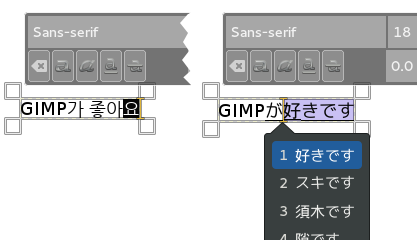
Contributors: Jehan Pagès…
Experimental tools
Two new tools were incomplete for inclusion to GIMP 2.10 by default, but still
can be enabled. Please note that they are highly experimental and likely to be
broken for you (up to have GIMP crash). We only mention them, because we need
contributors to get them into the releasable state.
N-Point Deformation tool introduces the kind of smooth, as little rigid as
possible warping you would expect physical objects to have.
Seamless Clone tool is aimed to simplify making layered compositions.
Typically when you paste one image into another, there are all sorts of
mismatches: color temperature, brightness etc. This new experimental tool tries
to adapt various properties of a pasted image with regards to its backdrop.
To enable these tools, you need to first enable the Playground page of the
Preferences dialog. Do it by running GIMP with a ‘—show-playground.’ switch
(for Windows, you might want tweaking the path to GIMP in the shortcut properties
accordingly). Then you need to go to Edit -> Preferences -> Playground and
enable the respective options, so that the tools would show up in the toolbox.
We need to stress again that you should only do so either if you are very
curious, or (which we hope for) intend to help us fix them.
Contributors: Marek Dvoroznak, Barak Itkin, Jehan Pagès, Michael Natterer…
Source for version 2.99 (Development)
GIMP releases available from gimp.org and its contain the source code and have to be compiled in order to be installed on your system.
For instructions, how to build GIMP from source code, please see this page.
GIMP 2.99.6 is now available at https://download.gimp.org/mirror/pub/gimp/v2.99/.
To allow you to check the integrity of the tarballs, here are the sums of the latest releases:
-
gimp-2.99.6.tar.bz2
(sha256): - 8d264b28445a3df2b940f30ee0b89b469255e975e8563b889fd57fb2f58f66a0
-
gimp-2.99.4.tar.bz2
(sha256): - df25c149c78f265181809d7685a9470a62c3c2f08c05e8498a4d5c86a048a5b2
-
gimp-2.99.2.tar.bz2
(sha256): - 39dc99a1581bbaafa9d6686bf246f7be12b0788ebfc37d185dea5bdae9c3ae73
GIMP help files are available at https://download.gimp.org/mirror/pub/gimp/help/.
Начинающим: уроки по GIMP
- Графический редактор GIMP пригоден для использования как любителями, так и профессионалами. Программа может применяться в качестве простого в освоении редактора фотографий для ретуши и обработки, преобразователя форматов изображений.
- При работе над изображениями можно выполнять многократную отмену и повторы действий, пользоваться опциями вращения картинки или фото, их масштабирования, искривления и отражения. Высококачественное сглаживание и хорошее качество итогового материала дает субпиксельная дискретизация любых используемых инструментов.
- Бесплатный фотошоп подразумевает исчерпывающий набор инструментов – с помощью штампов и кистей, карандашей и распылителей можно оформить полиграфическую продукцию, подготовить графики для интернет-страниц, корректировать фото и картинки. Также среди интересных функций программы – разработка анимационных видео.
- Среди линейки инструментов выделения присутствуют уже знакомые пользователям графических программ прямоугольное, свободное и эллиптическое выделение, выделение кривыми и инструмент «волшебная палочка».
- Данный редактор фото превосходно работает с любыми форматами файлов, начиная от традиционных PNG, GIF и JPEG до форматов TIFF, BMP, PDF, PCX и т.д.
- Для начинающих пользователей на моем блоге мною записано немало понятных видео-уроков по освоению кистей и палитры, работы с рамками, текстурами, плагинами, формами и шрифтами. Главная задача – сразу правильно настроить интерфейс под свои потребности и приступить к изучению доступных функций.
- Если получившиеся на смартфоне или фотоаппарате фото не совершенны и нуждаются в коррекции, можно быстро улучшить фотографию. В этом помогут различные фильтры, позволяющие убрать с фотографии пятна, повысить резкость, исправить выдержку или цветовой баланс.
- В GIMP можно удалять фон с фотографии либо размыть его, оформить изображение текстом по кругу, сделать оригинальную аватарку, создать свою фактуру. Например, если необходимо вставить фотографию или изображение в рамку, можно воспользоваться этим подробным уроком.
- GIMP рационально использует память компьютера или ноутбука: редактор открыт для дополнений, новые фильтры и форматы легко добавить к уже имеющимся.
Updated user interface and initial HiDPI support¶
One thing immediately noticeable about GIMP 2.10 is the new dark theme and
symbolic icons enabled by default. This is meant to somewhat dim the environment
and shift the focus towards content.
There are now 4 user interface themes available in GIMP: Dark (default), Gray,
Light, and System. Icons are now separate from themes, and we maintain both
color and symbolic icons, so you can configure GIMP to have System theme with
color icons if you prefer the old look.
Color, Legacy, and Symbolic icons
Moreover, icons are available in four sizes now, so that GIMP would look better
on HiDPI displays. GIMP will do its best to detect which size to use, but you
can manually override that selection in Edit > Preferences > Interface >
Icon Themes.
Icons in various sizes to adapt for HiDPI displays.
Contributors: Benoit Touchette, Ville Pätsi, Aryeom Han, Jehan Pagès,
Alexandre Prokoudine…
Donate to the Project¶
The GNOME Foundation has graciously agreed to act as fiscal agents for us. Contributions to the GIMP project can be made by donating to the GNOME Foundation and specifying the GIMP project as the recipient. The GNOME Foundation is a tax-exempt, non-profit 501(c)(3) organization and all donations are tax-deductible in the USA.
So far donation through GNOME Foundation can only be used for community needs (conferences, developer meetings… see ) and material renewal. .
You can choose from several options to support GIMP financially:
Financial help is needed for different reasons. The annual Libre Graphics Meeting is one of these things. It helps to get as many GIMP Developers to the conference as possible, so that we can do face-to-face team meetings, plan further development, fix bugs, and write new features.
If applicable, please specify whether you want to remain anonymous. While we usually don’t publish the names of donors, this may be considered for exceptional donations.
Many thanks to all our sponsors!
Paypal
Donate to gimp@gnome.org, this will notify us, and the GNOME board, that funds have been donated to the GIMP project. Credit card donations are also accepted via this route.
Liberapay
Donate to GIMP on Liberapay. Liberapay is a platform run by a non-profit organization allowing monthly crowdfunding (subscription based). See Wikipedia’s page on Liberapay.
Flattr
Donate to GIMP with Flattr. Flattr is a microdonation system. Users are able to pay a small amount every month (minimum 2 euros) and then click Flattr buttons on sites to share the money they paid among those sites, comparable to an Internet tip jar (for more details see Wikipedia’s Flattr article).
Bitcoin
Bitcoin (BTC) is an online digital currency that is based on an open-source, peer-to-peer encryption protocol first described in 2009 by a pseudonymous developer (or developers) Satoshi Nakamoto. Bitcoin is not managed by any government or central authority. Instead, it relies on an Internet-based network (for more details see Wikipedia’s Bitcoin article).
Bitcoin address: 1NVMCeoBfTAJQ1qwX2Dx1C8zkcRCQWwHBq
Cheque
Cheque, made payable to the GNOME Foundation, and sent to:
GNOME Foundation
#117
21 Orinda Way Ste. C
Orinda, CA 94563
USA
with a cover-letter (or a note in the “memo” field) saying it is for the GIMP project.
Hacking¶
GIMP uses git as its revision control system, and the GNOME Foundation hosts all of our code repositories:
- — the GIMP application itself
- — repo for this website
- — repo for the developer site at https://developer.gnome.org
- — the GIMP user manual
- plus several others
New contributors should first introduce themselves on IRC (the #gimp channel at irc.gimp.org) and/or the relevant mailing lists:
- GIMP Developers mailing list, for those who work on the core GIMP application and plugins
- GEGL Developers mailing list for developers of the GEGL library
- GIMP GUI Developers mailing list, for working on GIMP GUI
- GIMP Web Developers mailing list, for working on this website
- GIMP Documentation mailing list, for working on the user manual
This way you can announce the changes you intend to make, ask questions, and discuss which changes would be best. It’s generally better to focus on one thing at a time. Contributing to a software project for the first time is always the hardest part, which is why we’re here to help each other. There are also websites to give you a good look at how hacking is being done in GIMP.
GIMP has a complex code base, and newcomers that might not be sure where to start should have a look at our list of bugs for newcomers:
List of bugs for new contributors
The site you should keep updated with and the site that is updated all the time with new development help guides is located at https://wiki.gimp.org/. If you have GIMP installed at the moment then there are some files you should look at in the source code that might help you a little.
-
INSTALL
(Contains most up-to-date information on building GIMP from source code) -
HACKING
(Contains a lot of information that you need to know if you want to start coding) -
README
(The main README for GIMP which should be read by everyone) -
README.i18n
(The internationalization README which should be read by translators)
Once you’ve figured out what to do, though, be bold and get to work!
